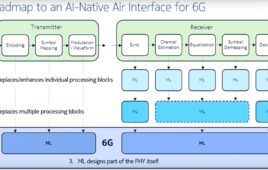Going by the name of RainCube, this radar-infused CubeSat prototype may be the answer for more accurate weather forecasts, says NASA’s Jet Propulsion Laboratory (JPL) team.
The shoebox-sized satellite’s small on-board instruments are using “experimental technology,” according to JPL, to track storms through rain and snow detection.
RainCube has a tiny, low-cost design that houses a miniaturized version of Ka-band precipitation radar to provide real-time forecast updates. Radar acts as the satellite’s eyes—its antenna sends out radar signals that bounce off raindrops, and the returning signals help form a picture of the storm.
“There’s a plethora of ground-based experiments that have provided an enormous amount of information, and that’s why our weather forecasts nowadays are not that bad,” says Simone Tanelli, RainCube’s co-investigator. “But they don’t provide a global view. Also, there are weather satellites that provide such a global view, but what they are not telling you is what’s happening inside the storm. And that’s where the processes that make a storm grow and/or decay happen.”
In July, the prototype was sent into low-Earth orbit from the International Space Station. Before long, the team had cause to celebrate after a string of RainCube successes. The satellite sent back its first images of a storm over Mexico, and most recently, it captured its second series of images of Hurricane Florence’s first rainfall in September.
The image below shows a Google Earth view of Mexico, and the white line depicts RainCube’s flight path. The insert at the bottom right corner shows rainfall amounts as seen by RainCube’s radar.
.jpg)
(Image Source: NASA/JPL-Caltech/Google)
According to JPL, RainCube is a technology demonstration to show that “mini-rain radar” is plausible, however, it’s not a system built to fulfill a mission on its own. The team proposes a flock of these miniaturized devices could work together to track storms, relaying pertinent data every few minutes.
“What RainCube offers on the one hand is a demonstration of measurements that we currently have in space today,” says Graeme Stephens, director of the JPL Center of Climate Sciences. “But what it really demonstrates is the potential for an entirely new and different way of observing Earth with many small radars. That will open up a whole new vista in viewing the hydrological cycle of Earth.”



